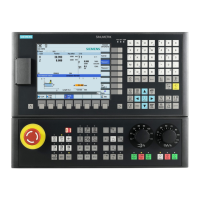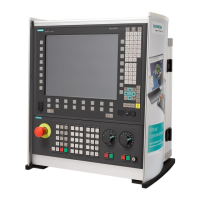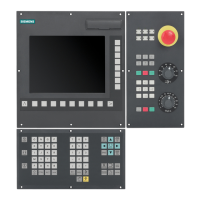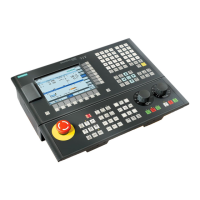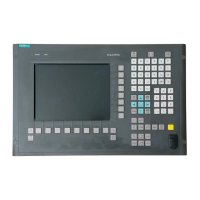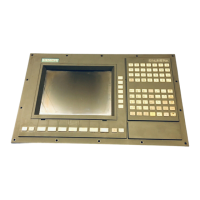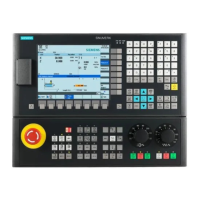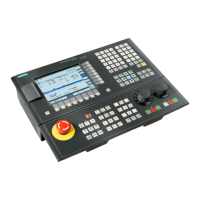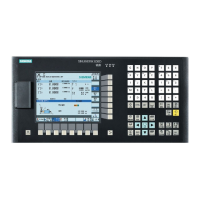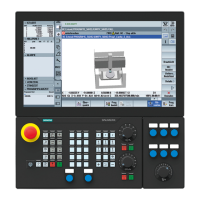P2: Positioning axes
10.3 Motion behavior and interpolation functions
Extended Functions
614 Function Manual, 03/2013, 6FC5397-1BP40-3BA1
Extended retract numerically controlled
For retracting single axes, the value must have been programmed via POLFA(axis, type,
value) and the following conditions must be met:
● The axis must be a single axis at the time of triggering
● $AA_ESR_ENABLE[axis]=1
● POLFA(axis, type, value) with type=1 or type=2 only
POLFA(axis, value, axis, type, axis type).
Note
NC-controlled extended stop for single axes:
The trigger is only effective if the axis is a single axis at the time of triggering, otherwise
the trigger is ignored and the axial stop for this axis is not executed.
NC-controlled extended retract for single axes:
The channel-specific NC-controlled extended retract function is not effective for single
axes. All axes that are single axes at the time of triggering $AC_ESR_TRIGGER will be
ignored for channel-specific retraction.
This also applies when all the parameters for retraction are set, such as:
MD37500 $MA_ESR_REACTION
$AA_ESR_ENABLE for the axis, etc.
Examples
Extended stopping of a single axis:
MD37500 $MA_ESR_REACTION[AX1]=22
MD37510 $MA_AX_ESR_DELAY_TIME1[AX1]=0.3
MD37511 $MA_AX_ESR_DELAY_TIME2[AX1]=0.06
...
$AA_ESR_ENABLE[AX1] = 1
$AA_ESR_TRIGGER[AX1]=1 ; axis begins to stop the process here
Extended retraction of a single axis:
MD37500 $MA_ESR_REACTION[AX1]=21
...
$AA_ESR_ENABLE[AX1] = 1
POLFA(AX1, 1, 20.0); AX1 is assigned the axial retraction position 20.0 ; (absolute)
$AA_ESR_TRIGGER[AX1]=1 ; AX1 begins to retract here
POLFA(axis, type): permissible programming abbreviation
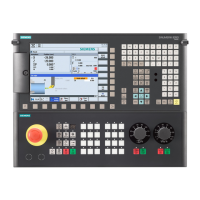
